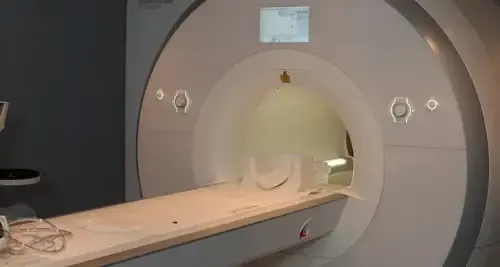Multiple Sclerosis
"It is convenient that both the patient himself and his relatives have an attitude of adaptation to the new situation and not of confrontation".
DR. JAIME GÁLLEGO
SPECIALIST. NEUROLOGY DEPARTMENT

Multiple sclerosis (MS) is the most common inflammatory disease that damages the nerve fiber (myelin) covering of the Central Nervous System (CNS). In young adults it ranks first among neurological disorders that cause disability.
Multiple sclerosis leads to the destruction preferably of the myelin sheath of the nerve fibers, although the nerve fibers themselves (axons), in the central nervous system, are also damaged.
It affects the brain and spinal cord in a disseminated manner, with a certain predilection for optic nerves, white matter of the brain, brain stem and spinal cord.

What are the symptoms of multiple sclerosis?
The disease may debut and progress with different symptoms, depending on the location of the plaques. The course can be in outbreaks, with partial or complete remission (relapsing-remitting form), or progressive (primarily progressive form). There are people who remain practically asymptomatic after long years of evolution and there are others with frequent outbreaks, or marked progressive deterioration or even with a fulminant course.
There are neurological manifestations such as fatigue, intellectual deterioration (even in initial phases or benign forms), alterations in motor control, and brief transitory episodes of repeated symptoms. Detailed studies have found visual field alterations in more than half of patients with no history of optical neuritis.
Among the abnormal movements described are all variants: rest tremor, hemifacial spasm, and tremor of movement. The most common transitory disorders in multiple sclerosis are dystonia, epileptic seizures, difficulty in speaking and walking. Other less frequent disorders are vasomotor disturbances, neuralgia, and sleep disorders.
The most common symptoms are:
- Fatigue.
- Intellectual impairment.
- Trembling.
- Hemifacial spasm.
- Dystonia.
Do you have any of these symptoms?
You may have multiple sclerosis
What are the causes of multiple sclerosis?
The cause or a specific marker of the disease has not been discovered. Attempts to demonstrate a single origin, viral or environmental, have failed.
The most convincing causal hypotheses are those that associate a genetic alteration with an environmental factor, infectious or not, that sets in motion an immunological process that causes alteration of the wall of the intracerebral vessels, edema and infiltration of activated cells in the central nervous system.
What is the prognosis of multiple sclerosis?
A better prognosis is generally accepted for those forms of disease with onset before 40 years of age, ocular, sensory or brain stem symptoms, evolution in outbreaks, initial symptoms of duration less than 6 months, and absence of family history.
On the other hand, late onset, progressive course from the beginning, cerebellar or medullary affectation, psychiatric and sphincter alterations, frequent outbreaks, existence of family history, and bilateral affectation in visual evoked potentials are cited as signs of worse prognosis. However, the individual variations are so marked that it is not possible to venture "a priori" what the evolutionary course of a given patient will be.
How is multiple sclerosis diagnosed?

Multiple sclerosis is also called plaque sclerosis, insular sclerosis or disseminated sclerosis.
The diagnosis of multiple sclerosis is based on clinical data. The disease is considered to be clinically defined when there have been two outbreaks with evidence of two lesions in separate areas in the central nervous system.
After clinical suspicion, it is necessary to rule out diseases that can occur in a similar way, including entities as varied as vascular inflammations, infections, tumours, granulomatous inflammations.
MRI serves not only to confirm the presence of lesions, but also to rule out other diseases, mainly malformative processes and tumors of the posterior fossa and medulla.
How is multiple sclerosis treated?
The use of corticosteroids during outbreaks (relapses, acute episodes, exacerbations) is the treatment of choice to decrease the duration and severity.
There are also therapeutic possibilities to modify the course of the disease: immunosuppressants, interferon, glatiramer acetate (Copaxone), Natalizumab or plasmapheresis.
Symptomatic pharmacological treatment for spasticity, pain, involuntary movements or psychiatric disorders is also recommended.
Where do we treat it?
IN NAVARRE AND MADRID
The Department of Neurology
of the Clínica Universidad de Navarra
The Neurology Department has extensive experience in the diagnosis and multidisciplinary treatment of neurological diseases.
We offer a diagnosis in less than 72 hours, along with a proposal for personalized treatment and post-consultation follow-up of the patient by our specialized nursing team.
We have the most advanced technology for an accurate diagnosis with cutting-edge equipment such as HIFU, deep brain stimulation devices, video EEG, PET and epilepsy surgery, among others.

Why at the Clinica?
- State-of-the-art diagnostic assistance with great work in research and teaching.
- Specialized nursing team.
- We work together with the Sleep Unit.


















